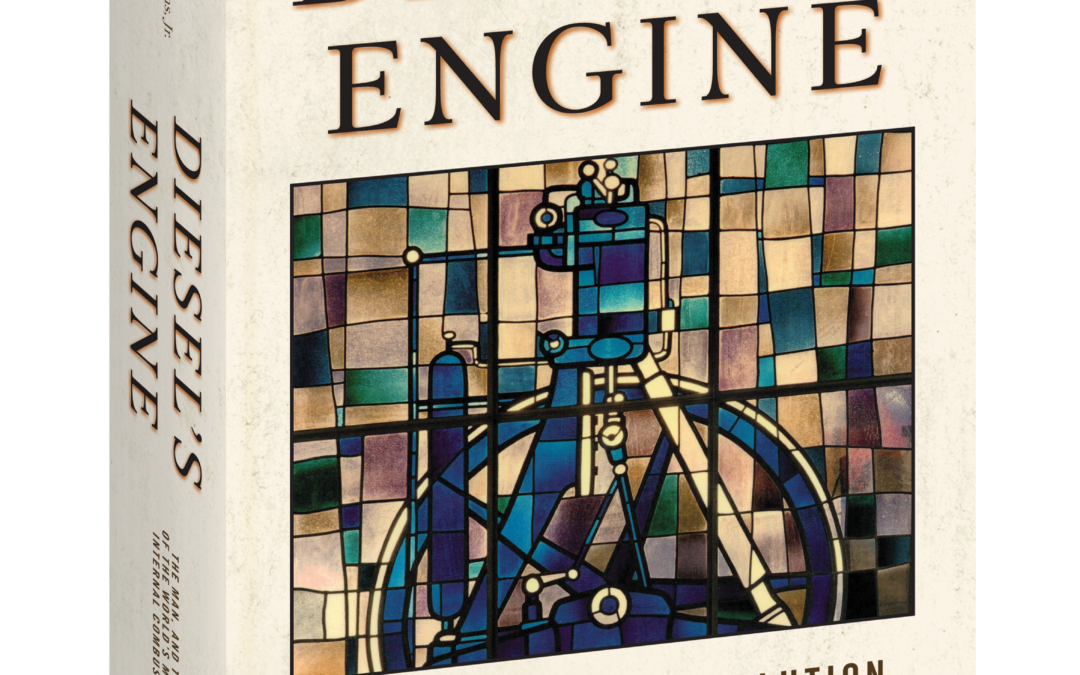
This is a reprint of Diesel’s Engine, first published in 1993. The book is a fantastic resource for serious fans of engine evolution and a great read as well. If you are interested in how the combustion engine came to be, this book and its companion, Internal Fire, are vital reading. We at Octane Press believe it to be a critical piece of automotive history and are happy to have a revised edition to offer to our readers.
C. Lyle Cummins Jr. continues his series on the internal combustion engine’s heritage in Diesel’s Engine. This engaging book is a fascinating and comprehensive history of the diesel engine, written by the son of Cummins Engine Co. founder, Clessie Cummins.
This is a companion book to Internal Fire: The Internal Combustion Engine 1673-1900 and covers in dramatic detail the entire sweep of Rudolf Diesel’s original ideas: the struggles to perfect the diesel engine, and the creation of an international industry that brought the world’s most efficient motor to market. Illustrated with black and white photos and period line drawings, this is a must-read for any serious enthusiast for engine and transportation technology.
Cummins is uniquely qualified to tell the diesel story. Raised in the family of America’s automotive diesel pioneer, his career as a mechanical engineer includes the design, development and marketing of diesel engine retarders and fuel systems for which he was granted five US patents. He has received several notable awards for his writings on I-C engine history. Cummins has devoted over two decades exhaustively researching his subject in corporate and museum archives throughout Europe and the United States to provide this definitive history of the diesel.
Accolades for Diesel’s Engine
“ … eminently readable, even by the mechanically innocent, treating his subject with humor, understanding and affection.” –Road & Track
“This new book is an enjoyable and informative . . . treatment of the subject, from its conception in the mind of Rudolf Diesel . . . until 1918. The author is eminently qualified to write on this subject.”–Waterways Journal
“[It’s] ‘user-friendly,’ and well worth the time spent for the sheer volume of information included.”– Gas Engine Magazine
“It’s a treasure trove of information . . . In short, the world will owe a big round of thanks to Lyle Cummins . . . for completing this very impressive work.”– Wheels of Time, American Truck Historical Society

From the acclaimed author of “Birdmen” comes a revelatory new history of the birth of the automobile, an illuminating and entertaining true tale of invention, competition, and the visionaries, hustlers, and swindlers who came together to transform the world.
In 1900, the Automobile Club of America sponsored the nation s first car show in New York s Madison Square Garden. The event was a spectacular success, attracting seventy exhibitors and nearly fifty thousand visitors. Among the spectators was an obscure would-be automaker named Henry Ford, who walked the floor speaking with designers and engineers, trying to gauge public enthusiasm for what was then a revolutionary invention. His conclusion: the automobile was going to be a fixture in American society, both in the city and on the farm and would make some people very rich. None, he decided, more than he.
“Drive!” is the most complete account to date of the wild early days of the auto age. Lawrence Goldstone tells the fascinating story of how the internal combustion engine, a theory looking for an application, evolved into an innovation that would change history. Debunking many long-held myths along the way, “Drive!” shows that the creation of the automobile was not the work of one man, but very much a global effort. Long before anyone had heard of Henry Ford, men with names like Benz, Peugeot, Renault, and Daimler were building and marketing the world s first cars.
Goldstone breathes life into an extraordinary cast of characters: the inventors and engineers who crafted engines small enough to use on a horseless carriage; the financiers who risked everything for their visions; the first racers daredevils who pushed rickety, untested vehicles to their limits; and such visionary lawyers as George Selden, who fought for and won the first patent for the gasoline-powered automobile. Lurking around every corner is Henry Ford, a brilliant innovator and an even better marketer, a tireless promoter of his products and of himself.
With a narrative as propulsive as its subject, “Drive! “plunges us headlong into a time unlike any in history, when near-manic innovation, competition, and consumerist zeal coalesced to change the way the world moved.
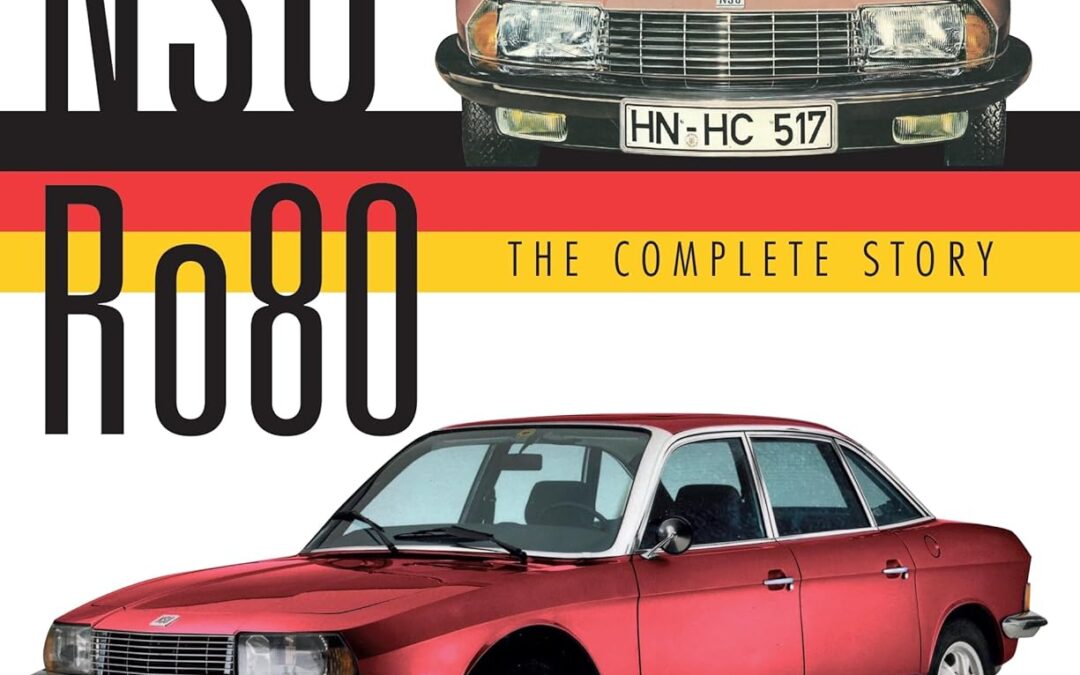
Launched in 1967, the NSU Ro80 had modern aerodynamic styling, a technologically advanced Wankel rotary engine and was voted Car of the Year in 1968. However, after the initial positive reception, the car developed a reputation for unreliability, with problems arising as early as 15,000 miles and many vehicles required a rebuilt engine before 30,000 miles. Despite the company resolving these reliability issues in both existing and new vehicles, and offering a generous warranty, the damage to the car’s reputation was done. The NSU Ro80 is the most celebrated motoring lost cause of the second half of the twentieth century, outranking the likes of the Edsel and the DeLorean because, unlike those statements of misplaced optimism and ego, it was a good car. Not just good: the NSU Ro80 is one of the great saloons. Launched in September 1967, the Ro80 was an all-new four-door five-seater from a West German company that – post-war – had never made anything other than economy runabouts, motorcycles and mopeds. That alone should have been enough of a risk, but this was also the world’s first purpose-built Wankel-engined family saloon. This compact, refined and elegantly simple power unit was the first really new concept in the realm of internal combustion engines to achieve mass production for ninety years. A car like the Ro80 could only really have come from Germany, where there was a passion for research and a pride in engineering not found elsewhere in Europe. With front-wheel drive, superb power steering and four-wheel disc brakes, the car had top handling and driver appeal. Quite simply, it was a masterpiece, considered by many to be the finest vehicle of its type in the world. But with one fatal flaw: its engine. With over 300 archive photographs, drawings and diagrams, this book tells the story of the NSU

This book explains how modern Formula 1 cars work and demystifies the extraordinary technology they contain.
By meticulously dissecting an F1 car into its constituent components, the author describes the design, engineering and function of every element, enabling the reader to develop a full understanding of how it all comes together to form a competitive package. The text is expertly written to satisfy both the engineering-minded reader as well as any enthusiast of the sport who wants to delve deeper, and supplemented by a superb range of close-up photographs, technical illustrations and diagrams.
- Chassis: design and manufacture; survival cell, fuel tank, impact structures, stiffness.
- Aerodynamics: principles, front and rear wings, turning vanes, sidepods, floor, wheels and their effect, brake ducts, suspension components, diffuser, Drag Reduction System (DRS).
- Suspension, steering and brakes: suspension layout, geometry and adjustments; steering wheel, column and geometry; brake hydraulics, brake-by-wire system, discs, calipers, pads and cooling.
- Power unit: the hybrid era, Internal Combustion Engine (ICE), Energy Recovery System (ERS), fuel.
- Transmission: clutch, gearbox, differential, driveshafts.
- Electronics: starting system, Electronic Control Unit (ECU), sensors, radio and data communications, cockpit display, cameras.
- And more: wheels and tyres; hydraulic system; safety equipment; cockpit controls.
- Chapters about car design and set-up.
- Use of analysis and simulation techniques such as computational fluid dynamics (CFD), wind-tunnel testing and rig testing. All F1 fans will find this book a deeply rewarding companion to enhance their appreciation of the sport.
All F1 fans will find this book a deeply rewarding companion to enhance their appreciation of the sport.
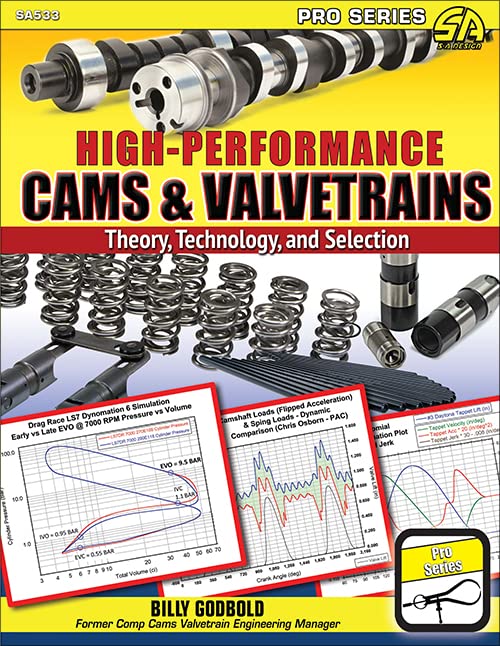
Understand the “magic” of how optimized camshafts extract the most performance from every engine component, eliminating valvetrain guesswork.
Camshafts are the coach and conductor of any four-stroke engine from early flatheads to modern Formula 1. Performance engines are amazingly sensitive to how and when the valves to the combustion chamber open and close. The valvetrain configuration and flow characteristics may change significantly between applications, but the fundamental principles are universal. This allows the language, setup, dynamics, energy, and pressure aspects of a valvetrain to be covered in a way that is just as useful for optimizing a sub-15-hp go-kart engine as it is on a 500-plus-hp street engine or modern 1,500-plus-hp NHRA Pro Stock engine.
In High-Performance Cams and Valvetrains: Theory, Technology, and Selection, farm-kid-turned-physicist Billy Godbold combines his quarter-century of experience with valvetrains at Comp Cams, Lunati, Crane Cams, and Edelbrock with the techniques he uses with professional teams in NASCAR, the NHRA, road racing, dirt-track racing, offshore racing, and land speed racing. He guides you to think about any valvetrain system with his perspective. Often lighthearted and filled with analogies, this book endeavors to make complex concepts easy to understand without watering down important details.
Specific configurations and applications are covered, providing techniques and examples for optimizing camshafts and the valvetrain around intakes, headers, superchargers, turbochargers, fuels, carburetors, and modern EFI applications. If you are planning or building a performance engine, or if you just want to know the science behind how cams and valvetrains work, this book is an indispensable resource.

Automotive journalist Karl Ludvigsen, born in 1934 in the USA and one of the greats in automobile history, opens his archives in this book. In more than 50 years as a motor journalist, author, and an automobile historian, he has accumulated a comprehensive knowledge of his subject, and has met all the prominent figures of the automobile’s golden age.
In this book we meet Stirling Moss, Jackie Stewart, Juan Manuel Fangio, Bruce McLaren, Emerson Fittipaldi, Dan Gurney and many more. A look in ‘Ludvigsens rear-view mirror’ takes us back to a time when cars definitely had combustion engines, when motor races were life and death struggles, and groundbreaking successes were made in the fields of safety, design and technology.
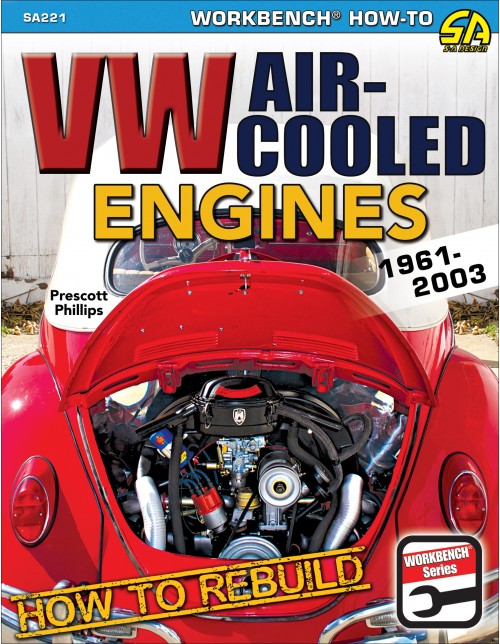
Rebuild your Volkswagen’s air-cooled engine with confidence and get your beloved boxer back on the road.
How to Rebuild VW Air-Cooled Engines: 1961-2003 offers beautiful color photos with insightful step-by-step captions for expertly rebuilding Volkswagen air-cooled engines and provides in-depth, hands-on information for disassembly, inspection, machining, parts selection, preassembly, final assembly, installation, and tuning.
Not only are the procedures for rebuilding covered in depth but engine model types, identification codes, specifications, and details are also covered in a manner that allows the user to source a good later-model candidate for rebuilding and helps retrofit the modern engine designs into earlier chassis.
This resource focuses on the VW Type 1, 2, and 3 engines beginning in the year 1961, when a significant redesign improved the reliability, durability, and horsepower of the basic initial design. For more than 70 years, automotive enthusiasts and the public in general has embraced the VW air-cooled engine for its simplicity, its capacity to be modified, and its bulletproof reliability.
One of the most widely used and versatile internal combustion engines in the world, this engine has powered VW Beetles, Buses, Porsche 914s, off-road buggies and rails, formula race cars, and many other machines both on and off-road. From 1938 until 2003, more than 21 million Beetles equipped with an air-cooled rear-mounted engine were produced.
If you have any interest in reviving your old VW, or perhaps are researching the purchase of one, this handy guide will cover all the bases in bringing that old air-cooled powerplant back to life.
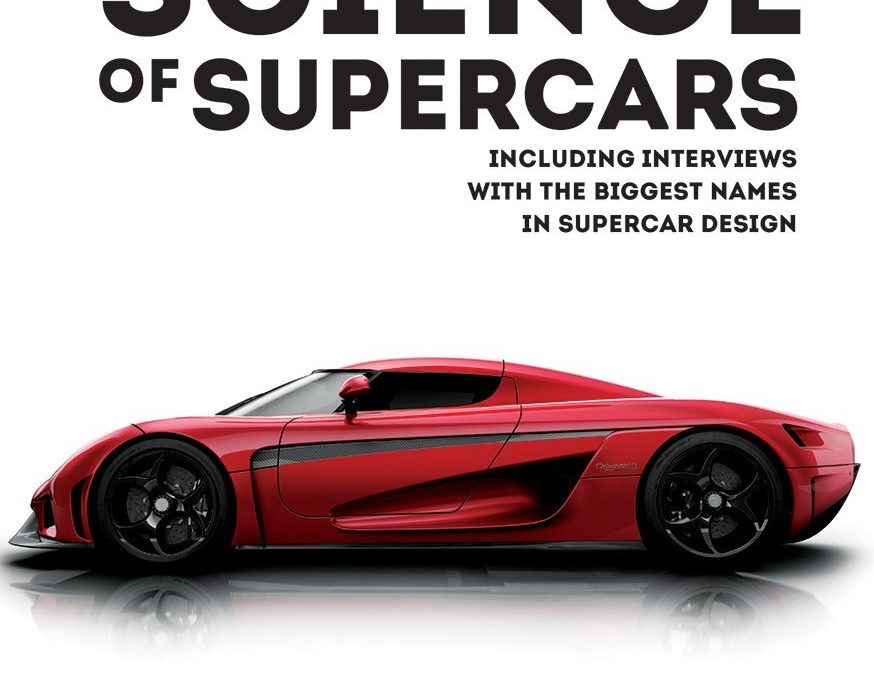
Trace the evolution of the supercar through the technology that drives it.
In The Science of Supercars, the authors describe the history of supercars, unraveling the mysteries and mechanics of the cars that changed the automotive world forever. In-depth interviews with the top names in the supercar and racing industries reveal their opinions on today’s supercars and their visions for the future.
David Coulthard, runner-up in the 2001 Formula One World Drivers’ Championship, provides the introduction. The authors follow with comprehensive chapters of inside information and exciting photographs that will be a catalog for supercar shoppers and a dream diary for others. The images show the interiors and exteriors of supercars and illustrated insets explain the technology.
-
1. The Thirst for Power – The internal combustion engine and the early days of speed
2. Style Versus Substance – Next steps, and the birth of aerodynamics
3. Emerging Technologies – The mechanics of war drive the birth of the supercar
4. Configuration – The Miura, the E-Type and the dawn of the modern age
5. The Science of Theater – Fashion and styling take center stage
6. The Turbo Years – The Porsche Turbo and the rebirth of supercar science
7. All-Wheel drive – Power or technology: how designers keep the cars on the road
8. Composites – The McLaren F1 and its technological legacy
9. Emerging Aero – Understanding the complex art of aerodynamics
10. Going to the Opera – The remarkable science behind the era-defining Bugatti Veyron
11. The Holy Trinity – Hybrid tech ushers in a new kind of supercar
12. The Future – The technology on the verge of reshaping the landscape.The Science of Supercars includes interviews with three of the top figures in the supercar world: Adrian Newey, legendary British Formula One engineer; Dr. Wolfgang Schrieber, Chief Engineer of the Bugatti Veyron; and Gordon Murray, designer of the McLaren F1 supercar, as well as contributions from iconic supercar manufacturers that include Lamborghini, Porsche, Bugatti, Pagani and McLaren.
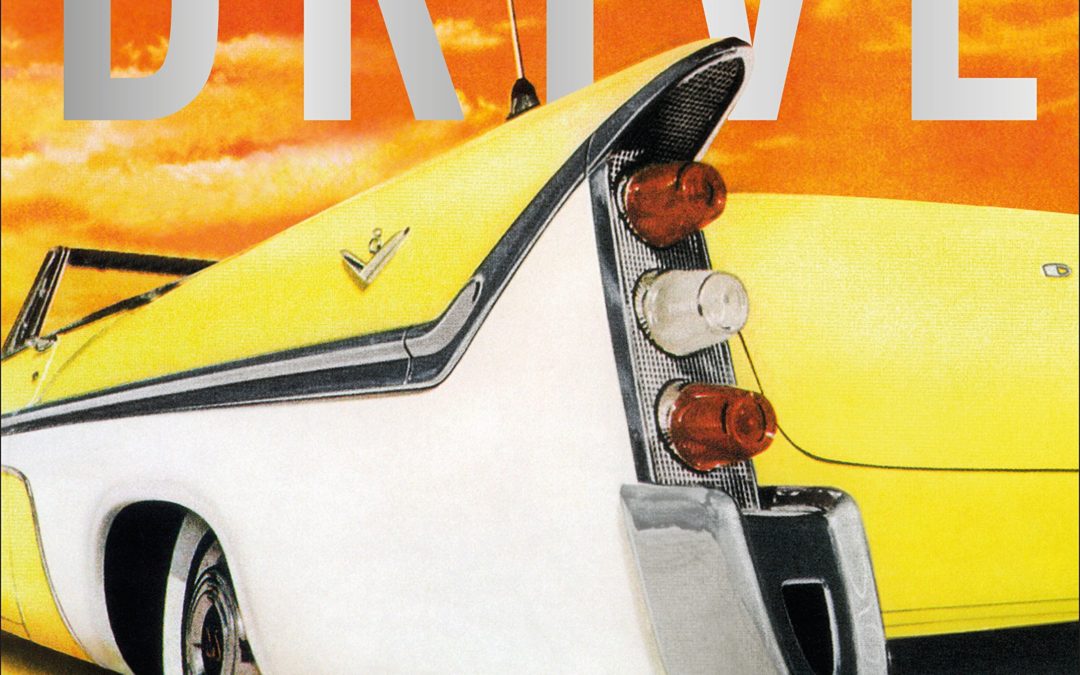
Charting the 130-years from the arrival of horseless carriages to the advent of driverless vehicles, celebrate the automobile and the romance of the open road.
Beginning with the development of the first vehicles powered by an internal combustion engine, Drive explores the early glamour of driving, motor sport, and car design, and looks at how the automobile has shaped the modern world.
Revealing the advances in technology and design that have made cars faster, safer, and better to drive, and transformed them from a means of transportation into objects of status, excitement, and desire, Drive tracks trends in auto manufacturing and the public’s changing tastes in cars: whether it’s Golden Era sports cars such as the MG, Alfa Romeo, Jaguar, and Chevrolet, muscle cars like the Mustang, hot rods, custom cars, the hippie-standard VW, or modern-day hybrid cars. Trivia and fascinating facts covering the growth of car racing, the development of traffic lights, the boom in automobile advertising, the first car washes, and the craft of artisan-made cars complete the subject, making it a must-have for car enthusiasts.

Irish motorcycle racer Charles B Franklin, designer of the Indian Scout and Chief
The Indian has been the iconic image for American big V-Twins down the years, due in no small measure to the motorcycles designed by Charles B Franklin – the Indian Scout and the Indian Chief.
Charles Franklin was born and raised in Ireland where he quickly became involved in motorcycle racing during the pioneer years. He rapidly established himself as Ireland’s first big star of racing and was the first to represent Ireland in international motorcycle competition. In the Isle of Man TT he consistently finished in the top eight, and in 1911 claimed second place, a remarkable achievement in itself. But it was when he moved to Indian in the USA, where he became the Chief Design Engineer, that his genius really flowed. His designs catapulted Indian back into the forefront of motorcycle design in the 1920s and ’30s and his racing engines and motorcycles won much glory for Indian against stiff opposition. Franklin introduced remarkable improvements in side valve combustion chamber design that predated the work of Ricardo. He championed an holistic approach that popularized new features such as the semi unit-construction powerplant, helical-gear primary drive, double-loop full-cradle frames and a host of other improvements to the early motorcycles. Franklin’s Indians not only chronicles his life, but also sheds much new light on the history of Indian motorcycles and the often turbulent times of the Indian Motorcycle Company itself. It’s a much-needed book for all Indian fans and all who love the history of the classic American V-Twins.

In 1951 Chrysler produced its first ever V8 engine – and what an engine it was! Technically advanced and featuring hemispherical combustion chambers, the new “Hemi-Head” engine produced much more power in relation to its capacity than any of its competitors could manage. In 1955 the new Chrysler C-300 was launched. The new model combined muscle (300 horse-power), style (by Virgil Exner) and superb handling for what was a large car. In its first year of production the new C-300 would win both major American stock car racing series: NASCAR and AAA. So began the legend and for each of the next ten years a new 300 model, identified by a different letter of the alphabet, would appear. Here, from C-300 to 300L, is the full story fo Chrysler’s famous 300 Letter series – “America’s Most Powerful Car.”
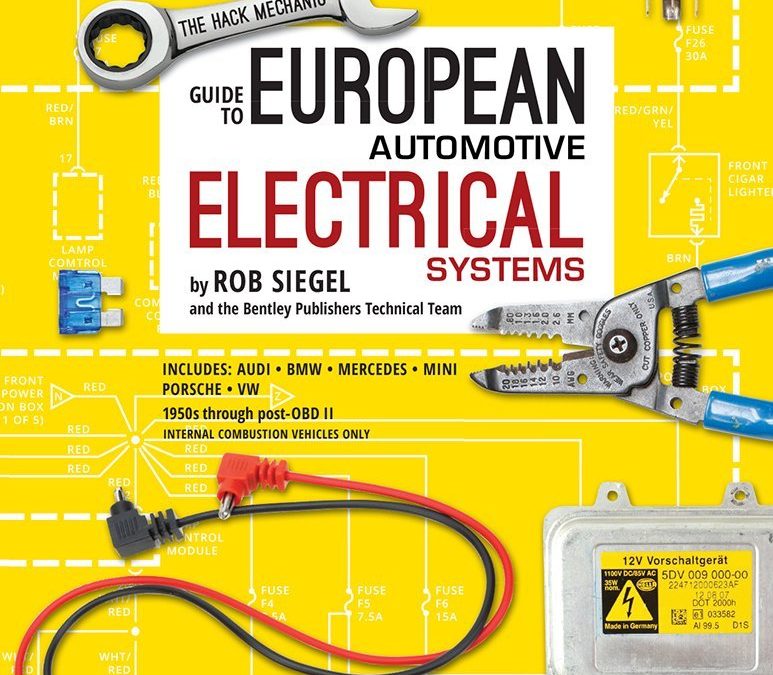
Electrical issues in European cars can be intimidating. The Hack Mechanic Guide to European Automotive Electrical Systems shows you how to think about electricity in your car and then take on real-world electrical problems. The principles discussed can be applied to most conventional internal-combustion-engined vehicles, with a focus on European cars spanning the past six decades.
Drawing on The Hack Mechanic’s wisdom and experience, the 38 chapters cover key electrical topics such as battery, starter, alternator, ignition, circuits, and relays. Through a practical and informal approach featuring hundreds of full-color illustrations, author Rob Siegel takes the fear-factor out of projects like making wire repairs, measuring voltage drops, or figuring out if you have a bad fuel pump relay. Essential tools such as multimeters (DVOM), oscillosopes, and scan tools are discussed, with special attention given to the automotive multimeter needed to troubleshoot many modern sensors.
You’ll get step-by-step troubleshooting procedures ranging from safely jump starting a battery to diagnosing parasitic current drain and vehicle energy diagnosis. And you’ll find detailed testing procedures for most problematic electrical components on your European car such as oxygen sensors, crankshaft and camshaft sensors, wheel speed sensors, fuel pumps, solenoids, and actuators. Reading wiring diagrams and decoding the German DIN standard are also covered.
Whether you are a DIY mechanic or a professional technician, The Hack Mechanic Guide to European Automotive Electrical Systems will increase your confidence in tackling automotive electrical problem-solving.
This book applies to gasoline and diesel powered internal combustion engine vehicles. Not intended for hybrid or electric vehicles.
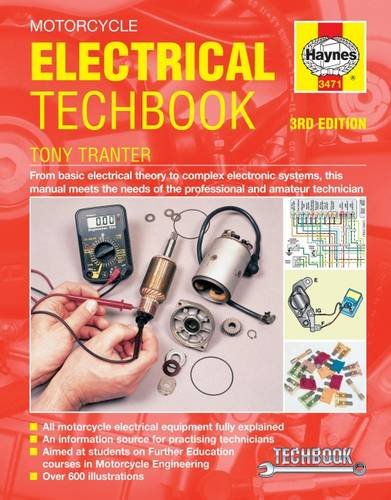
Motorcycle electrical systems made easy:
— All motorcycle electrical equipment fully explained
–Clearly captioned step-by-step pictures show precisely how to perform many tasks
–Aimed at anyone from the professional mechanic to the home DIYer to the Motorcycle engineering student
–Over 600 illustrations
–Ignition and combustion explained
–Spark plug types and construction
–Ignition: Magnetos, coil and battery, CDI, transistor and digital
–Fuel injection and engine management
–Alternators, DC generators and starters
–Batteries
–Lighting and signaling
–Braking and traction control systems
–Electrical fault finding
–Practical testing and test equipment
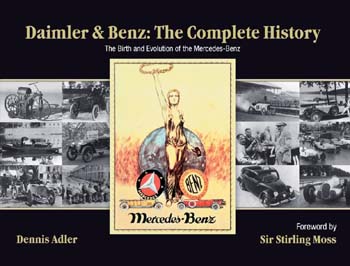
From the earliest workshop days to the grandest marque in the automotive world, the story of one of the most important enterprises of the twentieth century comes alive in this complete history. The rich history of Daimler–Benz (now DaimlerChrysler) has its roots in the early experimentation with the use of the internal combustion engine by three men: Carl Benz, Gottlieb Daimler, and William Maybach. Benz, working alone, and Daimler and Maybach, working together, the two shops separated by a mere sixty miles, in the late 1880s simultaneously laid the foundation of what would become the German automotive industry. At first there was competition between Benz & Cie. and Daimler Motoren Gesellschaft, as they engineered and styled the earliest “motorwagens” and began to develop markets for their products. These early efforts led to the establishment of an entire industry by the start of World War I. But the war and its aftermath devastated these two companies, as it did the German economy overall. By the early 1920s it became apparent that the only way to survival was a merger, and thus, on June 29, 1926, the stockholders of both companies gave approval to the new company, Daimler–Benz, which led directly to the birth of one of the world‘‘s best–known brands: Mercedes–Benz. In the hands of noted automotive photographer, author, and editor Dennis Adler, the history of the marque and the company unfolds through the decades, as Mercedes–Benz advances in fame, from the racing glory years to the present, becoming the standard that all automakers strive to meet. With archival (many never before published) and the author‘‘s own photographs, the beauty and power of the automobile comes alive, from the earliest models to the first crop of twenty–first–century Mercedes–Benzes. It is a story of excellence that is in many ways unmatched in the history of any industry. Today, as a global leader in design, safety, and overall excellence, Mercedes–Benz continues to lead the way.
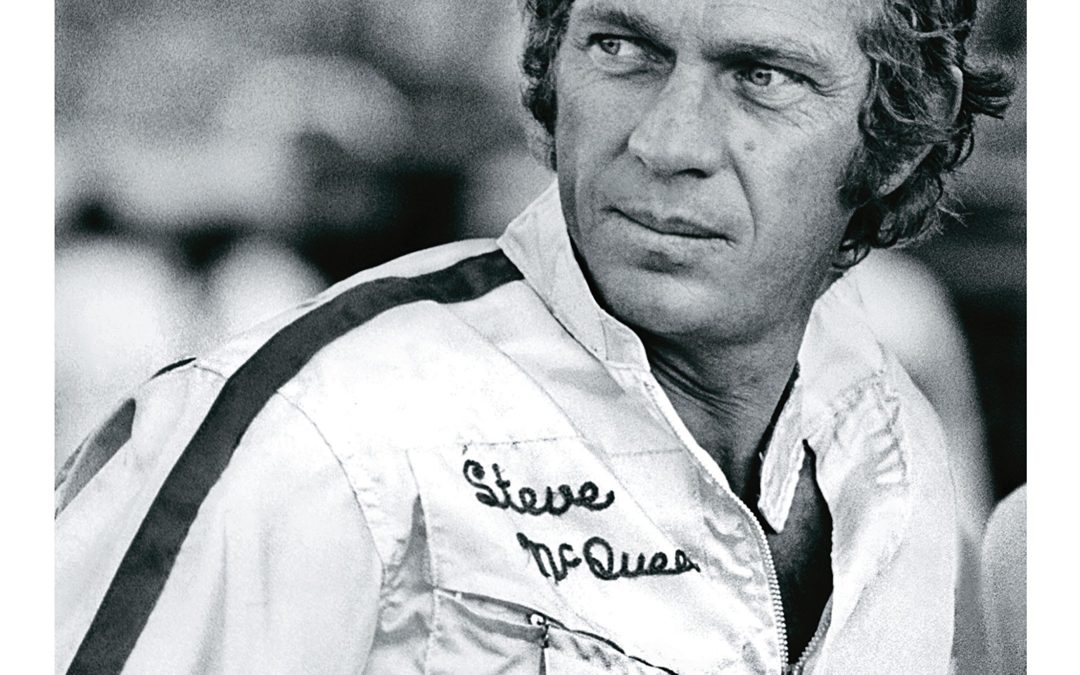
Even 30 years after his death, Steve McQueen remains an icon of cool. His image continues to appear in advertising and pop culture, and car, motorcycle, and racing fans embrace him as one of their own. Now comes this volume featuring rare photography and chronicling McQueen’s fascination with and passion for all things internal-combustion powered.
McQueen’s movie characters always had a great motorcycle or car—from the 650cc “BMW” motorcycle (a disguised Triumph) in The Great Escape (1963) to the Gulf Porsche 917 race car he raced in Le Mans (1971).
His need for speed propelled him from Hollywood into a number of top off-road motorcycle races, including the Baja 1000, Mint 400, and Elsinore Grand Prix. Determined to be ahead of the pack, McQueen trained vigorously, weight lifting, running, and studying martial arts.
Steve McQueen A Passion for Speed reflects a life lived in the moment and with the pedal to the metal.
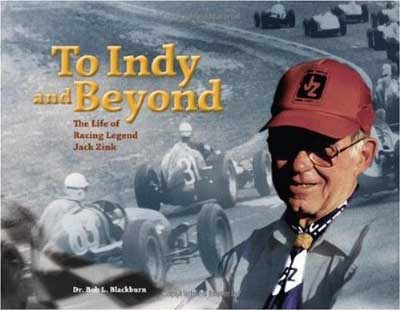
Jack Zink is a legend in the world of car racing. As a driver for more than twenty years, he won stockcar races on dirt tracks, accumulated trophies in off-road dune buggies, and even set a flying mile speed record in a 1957 Pontiac he designed and built for the early NASCAR circuit. As a team leader, mechanic, and engineer, he pushed the limits of technology with his innovative designs for cars that were lighter, lower, and more powerful. Even his failures, such as the attempted use of a turbine engine in a car, opened new doors that others rushed through in the pursuit of speed and durability. Perhaps he is best remembered for his victories at the greatest track in the world, the Indianapolis Motor Speedway, and the greatest race in the world, the Indianapolis 500. From 1950 to 1967, Jack walked shoulder to shoulder with the greatest team owners, mechanics, and drivers in racing history. Twice, his team won the coveted Borg Warner Trophy, in back-to-back Indy victories (1955 and 1956). But Jack was much more than a pioneer in car racing. He raced sailboats. He raced motorcycles. He also was a skilled engineer and businessman, ultimately building not one but two companies into international giants that still dominate the combustion industry with burners, flares, and incinerators that greatly reduce pollution. Even with all these accomplishments, Jack was most proud of his service to his community, especially the Zink Ranch, a 33,000-acre nature preserve in the Osage Hills of Oklahoma that will perpetually provide open space in an increasingly crowded and urban world. This biography weaves all of these stories into a portrait of Jack Zink. Along the way are the friends and family members who were part of the adventure, as well as the challenges and opportunities that drove him forward. Here is the story of one amazing man who lived by a simple code: “The man who wins is the man who tries.”
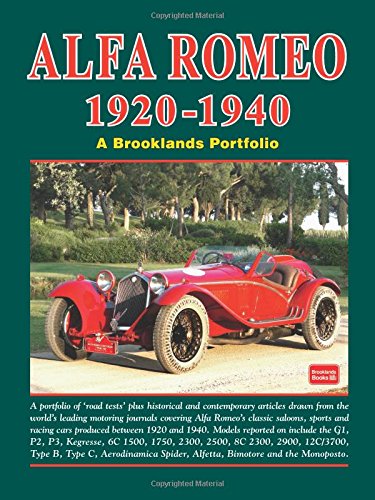
A portfolio of road tests plus historical and contemporary articles drawn from the world’s leading motoring journals covering Alfa Romeo’s classic saloons, sports and racing cars produced between 1920 and 1940. Models reported on include G1, P2, P3, Kegresse, 6C 1500, 1750, 2300, 2500, 8C 2300, 2900, 12C/3700, Type B, Type C, Aerodinamica Spider, Alfetta, Bimotore and the Monoposto. The company that became Alfa Romeo in 1920 was founded as Societa Anonima Italiana Darracq (SAID) in 1906 by the French automobile firm of Alexandre Darracq with the backing of some Italian investors. Sales slowed of these Italian Darracq’s and subsequently in 1909 a new company was founded named A.L.F.A. (Anonima Lombarda Fabbrica Automobili), initially still in partnership with Darracq. The first non-Darracq car, produced in 1910 by ALFA was the 24 HP, designed by their new employee, Giuseppe Merosi. It was a winner and sold 50 cars in its first year. In August 1915 the company came under the direction of Neapolitan entrepreneur Nicola Romeo, who, in 1915, went over to produce military hardware for the Italian and Allied war efforts. In 1920, the company name was changed to Alfa Romeo and car production started again with the Torpedo 20-30 HP which became the first car to carry the new logo. Their first success came that year when Giuseppe Campari won at Mugello and continued with second place in the Targa Florio driven by Enzo Ferrari. Giuseppe Merosi continued as head designer, and the company continued to produce solid road cars as well as successful race cars (including the 40-60 HP and the RL Targa Florio). In 1923 Vittorio Jano was lured away from Fiat, partly thanks to the persuasion of a young Alfa racing driver named Enzo Ferrari. He replaced Merosi as chief designer, who went on to Isotta Fraschini. The first Alfa Romeo under Jano was the P2 Grand Prix car, which in 1925 won the inaugural world championship for Grand Prix cars. For Alfa road cars Jano developed a series of small-to-medium-displacement 4-, 6-, and 8-cylinder inline power plants based on the P2 unit that established the classic architecture of Alfa engines. They featured light alloy construction, hemispherical combustion chambers, centrally located plugs, two rows of overhead valves per cylinder bank and dual overhead cams. These designs proved to be both reliable and powerful. Enzo Ferrari turned out to be a better team manager than driver, and when the factory team was privatised, it became Scuderia Ferrari. When Ferrari left Alfa Romeo, he went on to manufacture his own cars. Tazio Nuvolari often drove for Alfa during this period, winning many races for them prior to the Second World War. In 1928 Nicola Romeo left Alfa which soon afterwards went bankrupt when their defence contracts came to an end. Late in 1932 Alfa Romeo was rescued by the Italian government which took over effective control and Alfa which subsequently became a national emblem. During this period the company produced wonderfully successful sports cars which for many years excelled at Le Mans and built beautiful bespoke vehicles for the wealthy. The elegant bodies for these models were normally built by Touring of Milan or Carrozzeria Pinin Farina and era peaked with the legendary Alfa Romeo 2900B Type 35 racers. To put production figures into perspective, in the six years between 1934 and 1939, Alfa Romeo built 1994 cars, an average of 332 a year, a little less than one a day.




















